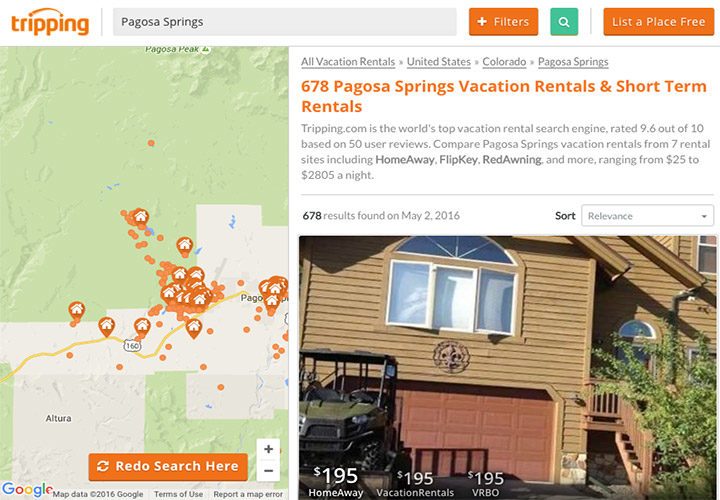At Pagosa Peak Open School — the first public, District-authorized charter school in Archuleta County — one of the educational methods is called ‘Project-Based Learning.’ Rather than focusing on textbooks and worksheets, the children engage in lengthy ‘projects’ that typically involve a mix of language arts, mathematics, science, social studies, music, art…
The project typically begins with a “driving question”. If the question is ambitious enough — if, in other words, we don’t already have the answer at the beginning of the project — then the driving question can result in true exploration and discovery. These are conditions where “learning” and “life” meet face-to-face.
My driving question for this editorial series:
“Why is the community of Pagosa Springs currently unable to provide enough safe, warm, reasonably priced housing for its work force… when, historically, that was not a big problem?”
Four years ago, a group of Archuleta County volunteers formed a ‘housing workgroup’ to try and wrap our heads around the community’s growing housing crisis. Three of us — builder Peter Adams, developer Jack Searle, and myself — drove to Breckenridge to meet with Jennifer Kermode, then-Executive Director of Summit County’s Combined Housing Authority. Breckenridge and Summit County had been dealing with their own housing crisis for a couple of decades, and had formed the Combined Housing Authority in 2006, funded in part by a very modest sales tax.
Ms. Kermode began by filling us in on the sales tax increase approved by Summit County voters. Summit County includes several tourism-driven towns… Breckenridge, Frisco, Dillon, Keystone, Silverthorne and some smaller towns. The population of the county doubled between 1990 and 2000, and has grown by another 30% since 2000. The median home value, according to the US Census, was around $460,000… and the median household income was about $65,000 a year.
Comparing that with Archuleta County in 2016: our population also doubled between 1990 and 2000, but our median home value was about now around $264,000 and the median household income was around $48,000.

In a very simplistic sense, a housing crisis can be viewed as the disparity between ‘median household income’ and ‘median home price.’ Some housing experts define a reasonably healthy community as one where the median home value is about 3 times the median household income.
In Summit County, the cost of a median-priced home was equal to 7 times the median household income in 2016. In Archuleta County, a median home value was about 5.5 times the median household income.
In Dallas, Texas — to take a different example — the median home price is currently about $169,000, slightly more than 3 times the median household income of $50,000. We could suggest, speaking simplistically, that Dallas is not suffering from a housing crisis.
In 2016, the Breckenridge real estate market was way out of whack. So was Pagosa’s.
They’re both still way out of whack. The median home value in Summit County is now $563,000 and the median household income is $78,000. Still a ratio of 7-to-1. A decade of taxpayer-funded government housing efforts, and the situation is as bad as ever.
Our median home value in Archuleta County is now around $295,000 and the median household income is around $51,000. About 6-to-1. Almost nothing has been done to address housing in Pagosa, and we’re slightly worse off than we were in 2016.
As I suggested, this is a rather simplistic way to assess a housing crisis, based on community-wide averages taken from the US Census. But it’s the wrong way — in my humble opinion — to view the Colorado’s housing crisis, because the most serious effects of the crisis, in both Summit County and Archuleta County, impact the people working low-paying jobs in a hospitality industry economy. Hotel maids. Maintenance workers at the golf course. Ski lift operators. Rafting guides. Waitresses and waiters in the restaurants. The “median household income” rarely applies to these workers. They often earn less than half the “median income.” (According to the US Bureau of Labor Statistics.)
And yet, these are the workers who keep a tourist-oriented community functioning.
The “median home value v. median income” approach also fails to take into consideration the availability of housing — and especially, the rate at which new housing construction is keeping pace (or rather, failing to keep pace) with population needs. It also fails to address the most important type of housing, when discussing the work force in a tourist town: Rental housing.
As I suggested a bit earlier, there are at least two roads leading to a healthy housing market. One approach depends upon government subsidies. That is to say, taxpayer subsidies. Jennifer Kermode, speaking in 2016, estimated the taxpayer support for the Summit Combined Housing Authority — the total contributed between 2007 and 2014 — at about $14 million.
“That sounds like a lot of money. And it is,” she told us. “But it’s only enough to build one 45-unit apartment building. And we need between 900 and 1,700 housing units in the county, just to keep up.”
So there we have a significant difference between Archuleta County and Summit County. They had a rough estimate of how many affordable housing units they needed, just to keep up. Here in Pagosa, four years later, we still have no clear idea.
But we do have a rough estimate of the number of houses in our community that have been converted into vacation rentals. STRs. Short-Term Rentals. Mini-motels.
Following our visit to Breckenridge in 2016, I researched the number of vacation rentals in Archuleta County, and it appeared — judging by the website Tripping.com — that there were as many as 678 vacation rentals in Archuleta County.

Summit County has more than twice the population of Archuleta County… and they needed 900-1,700 housing units to get their heads above water? That seems, to me, like a sizable number.
Maybe Archuleta County needs half that many? Maybe between 500-800? Just to keep up?
I visited the Tripping.com website again yesterday. It now states that we have 1,893 vacation rentals available in Pagosa Springs. (Top left corner.)

A dramatic change, it would appear… in less than four years.
And we’re doing almost nothing about it.

